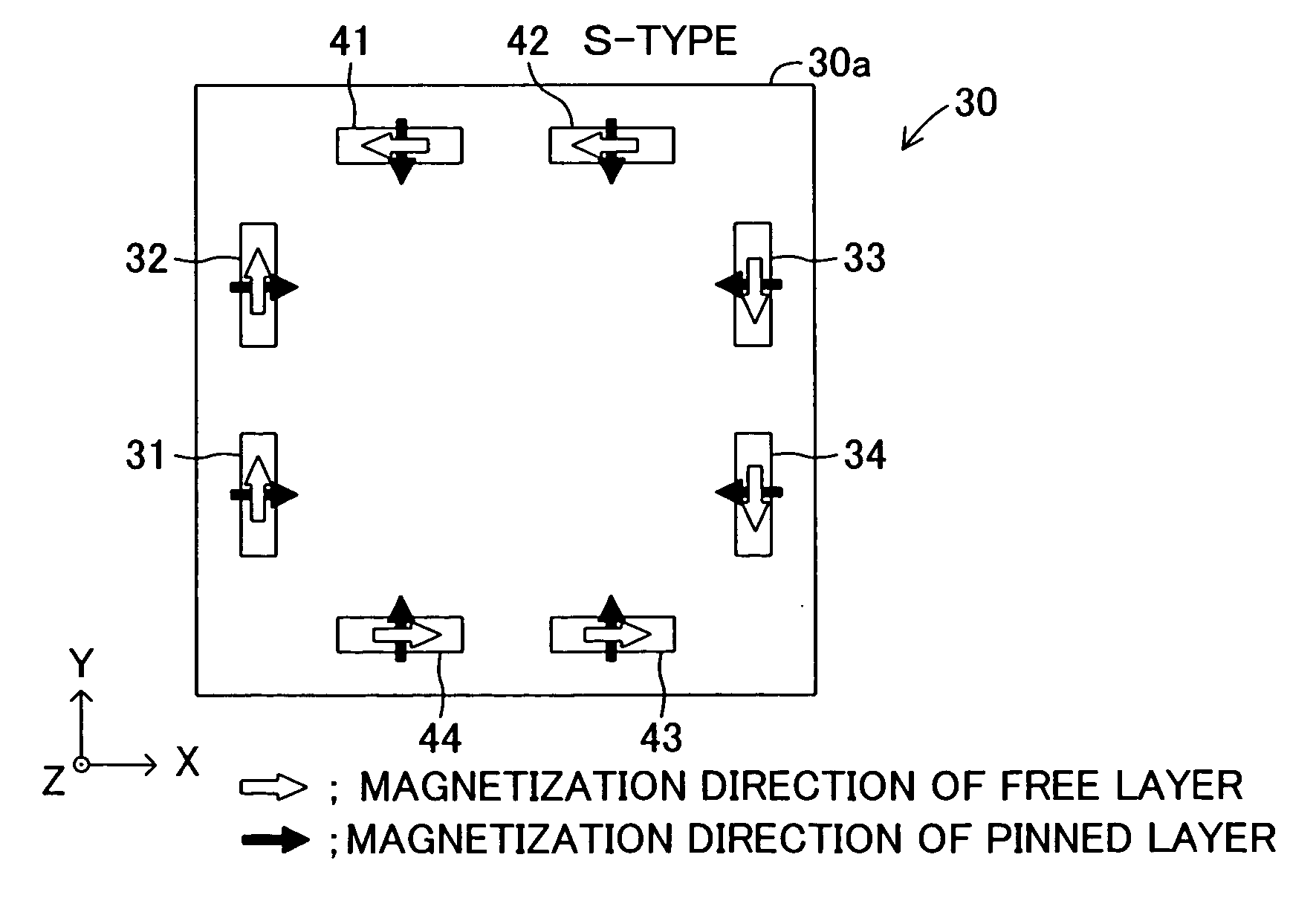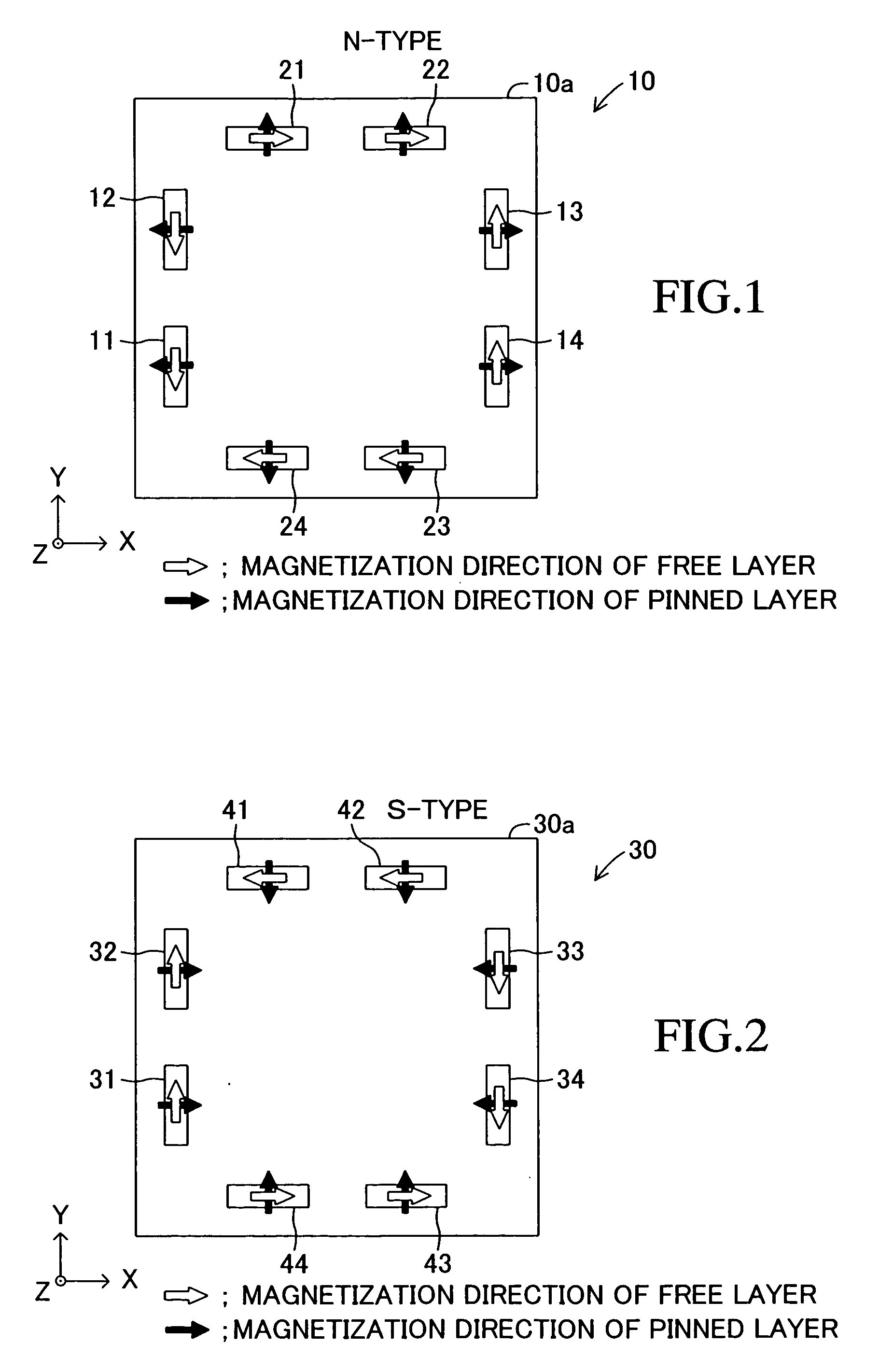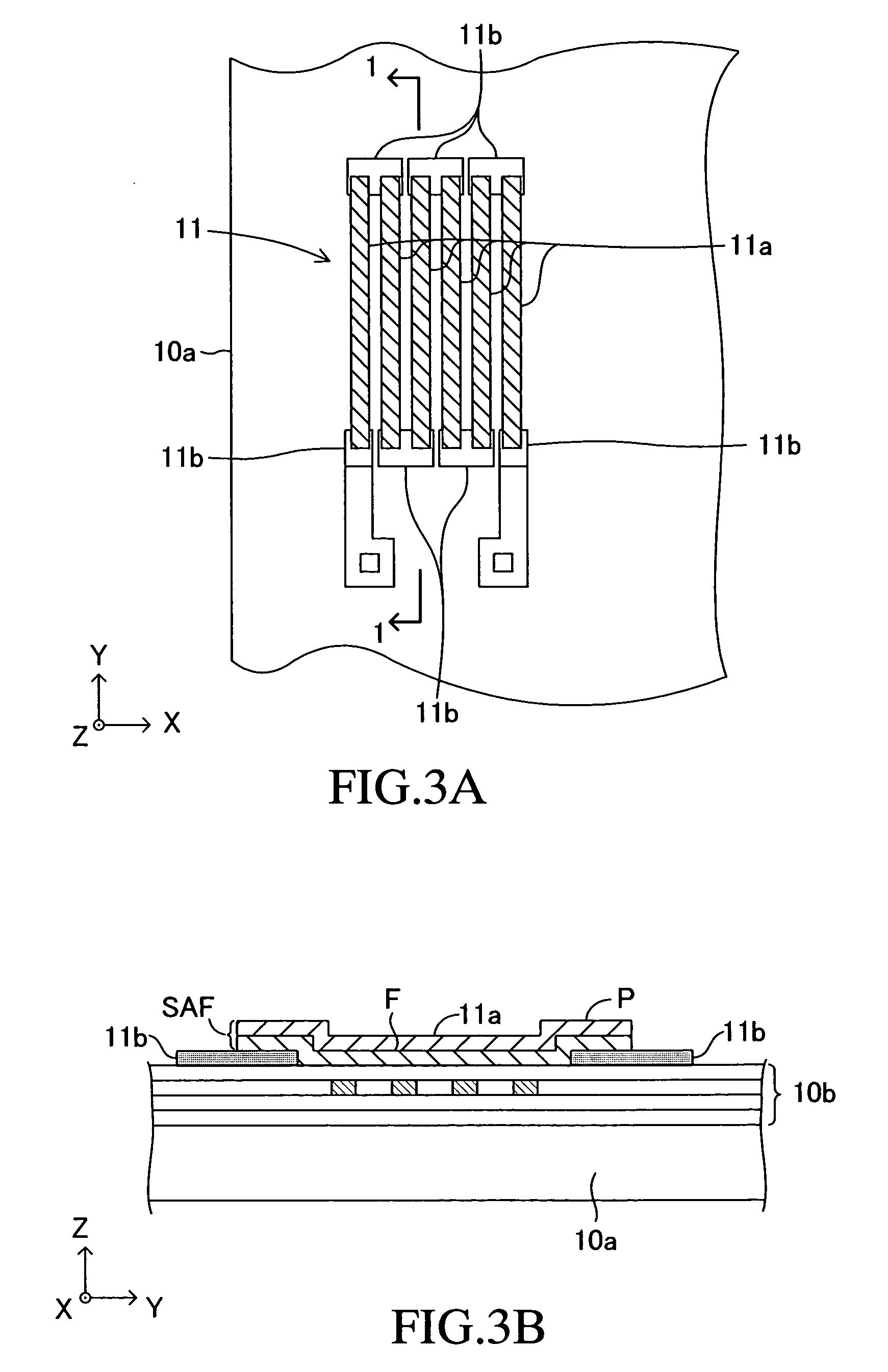Method for manufacturing magnetic sensor, magnet array used in the method, and method for manufacturing the magnet array
a technology of magnetic sensor and magnet array, which is applied in the direction of galvano-magnetic devices, instruments, solid-state devices, etc., can solve the problems of difficult mass production of small-sized biaxial magnetic sensors using synthetic spin valve films, and difficult generation of such magnetic fields
- Summary
- Abstract
- Description
- Claims
- Application Information
AI Technical Summary
Benefits of technology
Problems solved by technology
Method used
Image
Examples
Embodiment Construction
[0093] Embodiments of the present invention will next be described in detail with reference to the drawings. An embodiment of a magnetic sensor according to the present invention will be first described. The magnetic sensor is classified into an N-type magnetic sensor 10 shown in FIG. 1 and an S-type magnetic sensor 30 shown in FIG. 2. The N-type and S-type magnetic sensors 10 and 30 are manufactured by manufacturing methods to be described later.
[0094] The N-type magnetic sensor 10 and the S-type magnetic sensor 30 assume substantially the same shape and configuration except for the fixed magnetization direction of a pinned layer as represented by the black solid arrow of FIGS. 1 and 2 and the magnetization direction of a free layer in an initial state (a state in which an external magnetic field is absent) as represented by the inline arrow of FIGS. 1 and 2. Therefore, the N-type magnetic sensor 10 will be mainly discussed below.
[0095] As shown in FIG. 1, the magnetic sensor 10 ...
PUM
| Property | Measurement | Unit |
|---|---|---|
| Shape | aaaaa | aaaaa |
Abstract
Description
Claims
Application Information
 Login to View More
Login to View More - R&D
- Intellectual Property
- Life Sciences
- Materials
- Tech Scout
- Unparalleled Data Quality
- Higher Quality Content
- 60% Fewer Hallucinations
Browse by: Latest US Patents, China's latest patents, Technical Efficacy Thesaurus, Application Domain, Technology Topic, Popular Technical Reports.
© 2025 PatSnap. All rights reserved.Legal|Privacy policy|Modern Slavery Act Transparency Statement|Sitemap|About US| Contact US: help@patsnap.com



